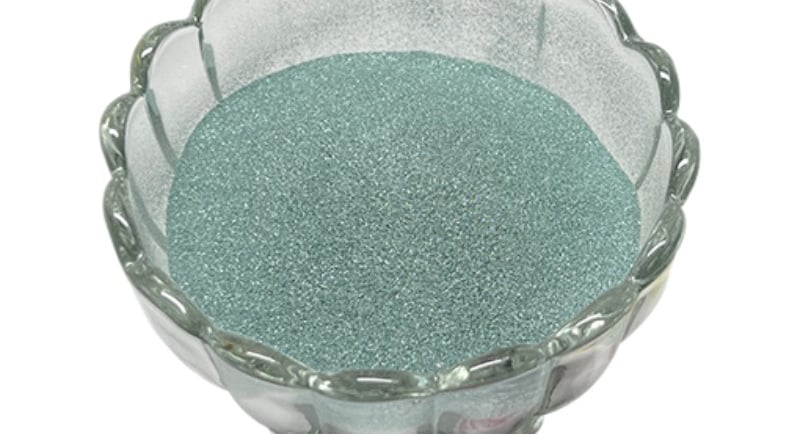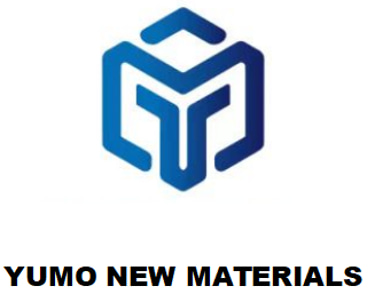HENAN YUMO: Engineered Precision, Uncompromised Performance
Green Silicon Carbide: Analysis of the Whole Industry Chain from Production to Application
Green Silicon Carbide (GC SiC), as an important material in the industrial field, occupies an irreplaceable position in high-end fields such as abrasives, refractory materials, and semiconductors due to its unique physical and chemical properties. This article will systematically analyze the overall industrial chain of green silicon carbide from three dimensions: definition and characteristics, production process, downstream products, and applications, and explore its future development trends.
5/27/20254 min read


Green Silicon Carbide: Analysis of the Whole Industry Chain from Production to Application
Green Silicon Carbide (GC SiC), as an important material in the industrial field, occupies an irreplaceable position in high-end fields such as abrasives, refractory materials, and semiconductors due to its unique physical and chemical properties. This article will systematically analyze the overall industrial chain of green silicon carbide from three dimensions: definition and characteristics, production process, downstream products, and applications, and explore its future development trends.
1、 Definition and core characteristics of green silicon carbide
1. Chemical composition and crystal structure
Green silicon carbide is an artificially synthesized variant of silicon carbide (SiC) with the chemical formula SiC, and its crystal structure is mainly hexagonal (α - SiC). Its purity is usually over 99.5% and the impurity content is extremely low (Fe ₂ O ∝ ≤ 0.2%, C≤0.1%), The color is light green or dark green, different from the gray black color of black silicon carbide.
2. Physical and chemical properties
Hardness: The Mohs hardness is 9.5, second only to diamond and cubic boron nitride, and 1.3 times that of corundum (Al ₂ O3).
Thermal conductivity: 120-270 W/m · K, can quickly dissipate heat and reduce thermal stress during processing.
Chemical stability: acid and alkali resistant, antioxidant at high temperatures (oxidation initiation temperature ≥ 1600 ℃).
Electrical performance: Semiconductor characteristics (bandgap width of 3.2eV), suitable for high-frequency and high-temperature electronic devices.
3. Differences from black silicon carbide
Purity: The purity of green silicon carbide (≥ 99.5%) is significantly higher than that of black silicon carbide (98-99%).
Application scenarios: Green silicon carbide is used for precision machining, while black silicon carbide is mostly used for rough grinding.
Production cost: Green silicon carbide requires additional acid washing and purification, which increases the cost by 20-30%.
2、 Production process of green silicon carbide
The industrial production of green silicon carbide is a high energy consumption and high technological density process, mainly including four major links: raw material preparation, high-temperature synthesis, crushing and purification, and grading and packaging.
1. Raw material preparation
Quartz sand (SiO ₂): purity ≥ 99%, particle size 0.1-1mm.
Petroleum coke (C): Fixed carbon content ≥ 98%, sulfur content ≤ 0.5%.
Additives: sawdust (adjusts porosity), salt (promotes impurity volatilization).
2. High temperature synthesis (Acheson method)
Furnace structure: rectangular resistance furnace, with graphite electrodes as the core and insulation materials (coke, quartz sand) filled around the periphery.
Reaction principle: At 2200-2500 ℃, SiO ₂ undergoes a carbon thermal reduction reaction with C:
SiO2+3C→SiC+2CO↑
Process parameters:
Furnace temperature gradient: The central area is ≥ 2400 ℃, and the edge area is about 1800 ℃.
Response time: 36-48 hours.
Energy consumption: Each ton of product consumes 8000-10000 kWh of electricity.
3. Crushing and Purification
Primary crushing: Jaw crusher crushes synthetic blocks to below 50mm.
Acid washing purification:
Soak in hydrochloric acid (HCl) to remove metal impurities (Fe, Al).
Hydrofluoric acid (HF) treatment: Dissolve residual SiO ₂.
Wash with water until neutral, and dry to obtain high-purity SiC particles.
Magnetic separation: Remove ferromagnetic impurities (magnetic content ≤ 0.01%).
4. Grading and Packaging
Airflow classification: According to the particle size requirements (F16-F2000), centrifugal or cyclone classifiers are used.
Packaging standard: Vacuum sealed moisture-proof, 25kg/bag or 1 ton/container bag.
3、 Downstream products and application areas of green silicon carbide
1. Abrasives and precision machining tools
Consolidation grinding tool:
Resin grinding wheel: used for grinding hard alloy cutting tools (F80-F220).
Ceramic grinding wheel: semiconductor wafer cutting (F1500-F2000).
Coated grinding tools:
Sandpaper/sand belt: Polish optical glass (Ra ≤ 0.1 μ m).
Grinding fluid: Chemical Mechanical Polishing (CMP) for semiconductor substrates.
2. Refractory materials
High temperature kiln equipment:
Kiln car shed board: resistant to temperatures of 1800 ℃, with a lifespan 50% longer than traditional materials.
Box bowl: used for sintering electronic ceramics (such as MLCC).
Refractory castables:
Add green carbide micro powder (D50=5 μ m) to improve thermal shock resistance.
3. Semiconductor and Electronics Industry
Wafer substrate: 4H SiC single crystal wafer is used to manufacture power devices such as MOSFETs and IGBTs.
RF components: GaN on SiC RF chips are used for 5G base stations, with a working frequency of up to 28GHz.
LED packaging: SiC heat dissipation substrate reduces junction temperature and improves lamp lifespan.
4. New energy and environmental protection
Photovoltaic industry: Diamond wire for multi wire cutting of silicon ingots (assisted by SiC suspension).
Fuel cell: SiC coated bipolar plate, resistant to hydrogen embrittlement corrosion.
Wastewater treatment: Porous SiC ceramic filter element, resistant to acid and alkali corrosion, with a service life of over 10 years.
5. Other high-end applications
Aerospace: Bottom material of thermal barrier coating (TBC) for turbine blades.
Biomedical: SiC artificial joints have better biocompatibility than titanium alloys.
Nuclear industry: SiC fiber-reinforced composites (SiC/SiC) used for reactor cladding tubes.
4、 Challenges and Future Trends of Green Silicon Carbide Industry
1. Current technological bottleneck
Energy consumption issue: The Acheson method consumes 40% of the cost and urgently requires low-carbon processes such as microwave synthesis.
Nano scale processing: The agglomeration problem of submicron SiC powder has not been fully resolved.
Wafer defect control: The dislocation density of SiC single crystals over 6 inches needs to be reduced to ≤ 100 cm ².
2. Innovation direction
Green manufacturing technology:
Recycling CO waste gas to produce methanol, achieving carbon cycling.
Regeneration and utilization of acid pickling waste liquid (such as hydrochloric acid electrolysis recovery).
Advanced synthesis technology:
Preparation of high-purity β - SiC by chemical vapor deposition (CVD).
Plasma activated sintering (PAS) reduces energy consumption by 30%.
Downstream product upgrade:
3D printing of SiC ceramic complex components using photopolymerization molding technology.
Quantum dot SiC sensor (detection accuracy up to ppb level).
3. Market prospects
According to Grand View Research, the compound annual growth rate (CAGR) of the global silicon carbide market is expected to reach 15.7% from 2023 to 2030, with the share of green silicon carbide in the semiconductor sector expected to increase from 25% to 40%.
5、 Conclusion
The industrial chain of green silicon carbide covers a wide range of fields from mineral smelting to cutting-edge technology, and its level of development directly reflects a country's high-end manufacturing strength. With the explosion of industries such as new energy vehicles, 5G communication, and third-generation semiconductors, green silicon carbide is upgrading from an "industrial tooth" to a "technological cornerstone". In the future, through technological innovation and interdisciplinary integration, this material will undoubtedly unleash greater potential, driving humanity towards the era of efficient and clean intelligent manufacturing.
